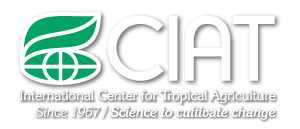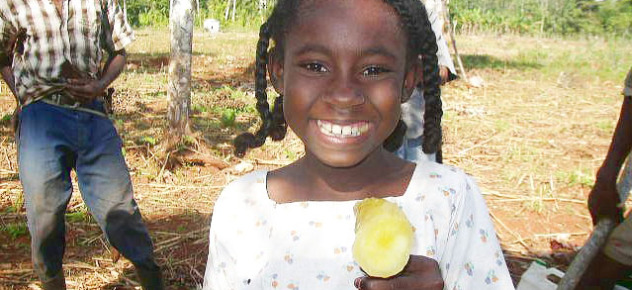HarvestPlus: Modern Crop Science Meets Popular Culture
High-level policymakers from around the world – attending the 2nd Global Conference on Biofortification in Kigali, Rwanda – committed themselves in early 2014 to making nutrient-rich foods widely available to developing-country consumers over the next several years. With more than 1 million farmers already producing such foods, the goal is to reach more than 100 million people suffering from micronutrient malnutrition by 2018. The question now is how to achieve this ambitious end.
Fortunately, HarvestPlus – the CGIAR program dedicated to developing and promoting such foods – has some very good answers. Logically for a research organization, the program relies on the power of modern crop science, combined with the logistical acumen of farmers, technicians, and private sector entrepreneurs working in the field. But in an unusual twist, HarvestPlus has also recruited into its science-based program a full cast of characters from the world of popular culture.
It’s showtime!
For several years, HarvestPlus has been delivering targeted messages on human nutrition and related topics through local radio stations in collaboration with NGOs. In Uganda, for example, the program has collaborated in a radio mini-drama series called My Children, which was aired by 13 stations in seven languages for 30 weeks. HarvestPlus has also provided training and other support for community drama groups – another effective medium for disseminating practical information in local languages.
More recently, HarvestPlus has partnered with popular entertainers to put nutrient-rich foods on the national stage in key African countries.
Last year, for example, the program joined up with top directors from Nollywood – Nigeria’s film industry, which is now the world’s third largest in terms of revenue. The result was four movies that entertain and inform viewers about health and nutrition, including vitamin A cassava in the storyline. Released at the 11th Abuja International Film Festival in September 2014, the films reinforce the efforts of Nigeria’s Ministry of Agriculture to promote vitamin A cassava under its ambitious Agricultural Transformation Agenda.
Nigerian Nollywood Partnership with HarvestPlus has made 4 Movies to improve the Diet and Health lives of Nigerians pic.twitter.com/a9LL5iKMXE
— NTA News (@NTANewsNow) September 23, 2014
In Rwanda, top musicians – King James, Miss Jojo, Riderman, Tom Close, and Urban Boyz – promoted better nutrition and health through a catchy new music video released during late 2014. The song celebrates the nutritional benefits of high-iron beans now available in Rwanda, Democratic Republic of the Congo, and Uganda.
“These iron beans are now making their way into urban markets, so we’re launching a campaign to increase consumer awareness,” said Lister Katsvairo, who heads the Rwanda Office of HarvestPlus. “We worked with Rwanda’s top musicians, who cater to all musical tastes, including Afro-Pop, rap, and R&B.” Through a series of live performances, the campaign reached more than 30,000 people.
Science and technology behind the scenes
Meanwhile, HarvestPlus scientists and their partners are delivering superb performances as well. During 2014, six countries released 10 new nutrient-rich varieties of a half dozen different crops – including three new cassava varieties in Nigeria that are richer in vitamin A. Many such varieties have already been released in 27 countries, and others are undergoing testing in 44 countries. To further boost the supply of nutritionally improved crops, HarvestPlus is mainstreaming genetic improvement for enhanced nutritional value. At the global conference in Kigali, Frank Rijsberman, CEO of the CGIAR Consortium, underlined the commitment of the Consortium’s member centers to breeding for mineral and vitamin traits in all of their conventional crop improvement programs. In just the last year, scientists have achieved steady progress toward this end, with bean improvement, for example, passing the half-way mark, meaning that more than 50% of the elite lines developed show increased iron and zinc content.
What commitment does @FrankRijsberman @CGIAR make to biofortification? watch: http://t.co/L37rxibOLb #biofortconf
— HarvestPlus (@HarvestPlus) April 10, 2014
At the same time, HarvestPlus and its local partners are fine-tuning the systems that deliver new varieties to farmers. In Nigeria, for example, the program is helping create sustainable markets for planting materials or stems of vitamin A cassava. By early 2015, the supply of stems from HarvestPlus had tapered off, as distribution by farmers and commercial providers steadily increased. In Rwanda, HarvestPlus and its local partners evaluated and refined different iron-bean distribution channels, which include direct marketing, cooperatives, agro dealers, and a payback system, in which farmers receive 1 kilogram of improved seed in exchange for 2 kilos of grain at harvest.

